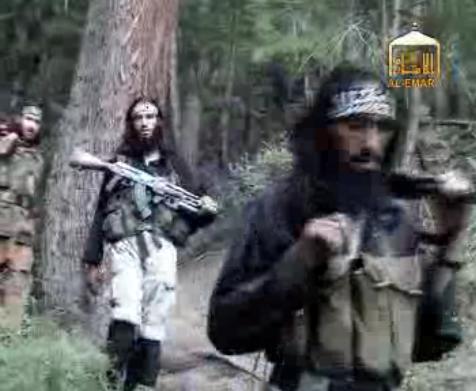|
|
|
Chechens with headbands are walking through a Taliban column during an attack on a US outpost in Kunar province. Click here for more images. |
Back on July 11, I noted that ISAF was beginning to define the enemy in Afghanistan. At that time, ISAF stated that it was hunting a Taliban commander involved in facilitating the movement of Lashkar-e-Taiba fighters into Nangarhar province in eastern Afghanistan. Since then, in 11 press releases, ISAF has mentioned the presence of al Qaeda, the Islamic Movement of Uzbekistan, Arabs, Chechens, Pakistanis, and ‘foreign fighters’ in the provinces of Kunduz, Paktia, Zabul, Khost, Farah, Kunar, Nangarhar, and Ghazni. According to several US military officials, the term ‘foreign fighter’ is a catchall phrase used to describe al Qaeda.
Two such reports were released today. The first press release stated that “Arab, Chechen and Pakistani fighters” were killed during Wednesday’s raid and battle in Paktia province. The second press release said that “an Islamic Movement of Uzbekistan sub-commander” who led attacks on police stations and facilitated weapons in Kunduz province was among those targeted (it is unclear if he was killed, an inquiry with ISAF is pending).
The mention of the Islamic Movement of Uzbekistan sub-commander is interesting, as this is just the third time ISAF has mentioned the al Qaeda-linked Central Asian terror group in its press materials [previous mentions were in August 2009 and in September 2009]. Based on the ISAF press releases alone, it appears that the Islamic Movement of Uzbekistan has a presence in Kunduz and Takhar provinces.
Are you a dedicated reader of FDD's Long War Journal? Has our research benefitted you or your team over the years? Support our independent reporting and analysis today by considering a one-time or monthly donation. Thanks for reading! You can make a tax-deductible donation here.









1 Comment
Hey Bill, I really appreciate your work, and I do believe there are “Chechens” running around in AfPak. I’ve worked with hundreds of individuals from the Northern Caucasus before, and they indeed have a distinctive look. But, the two individuals featured on the picture do not look Chechen to me.